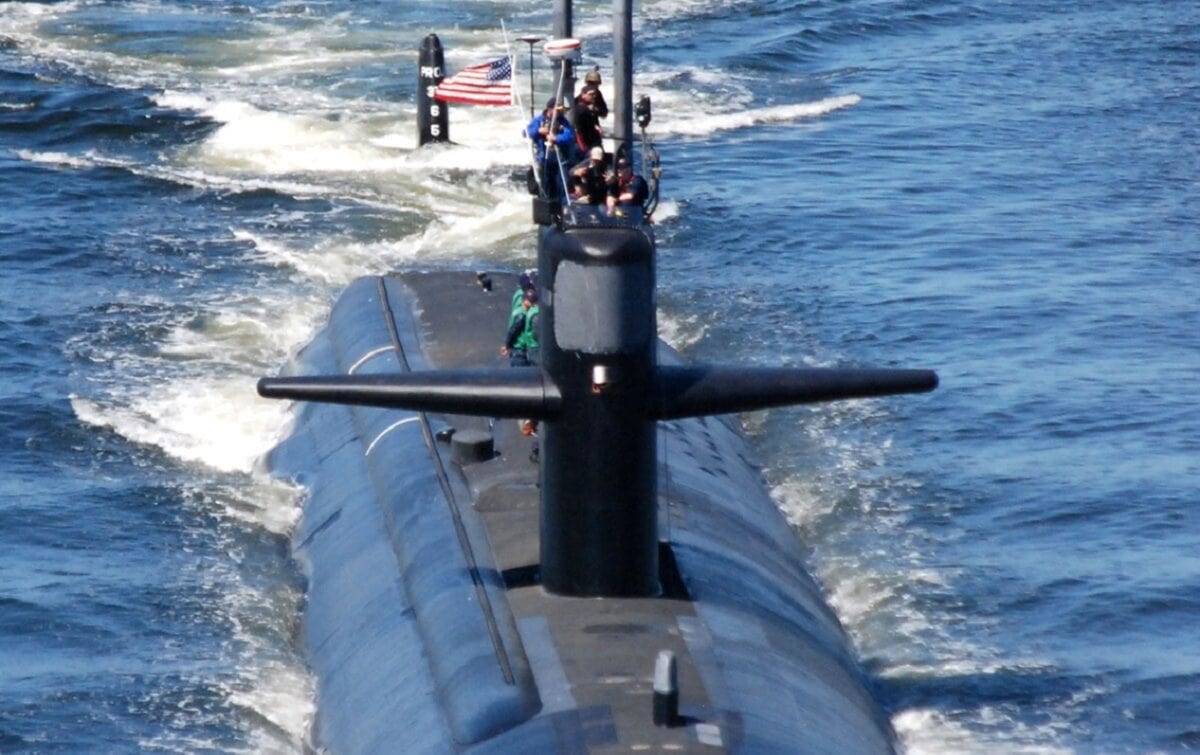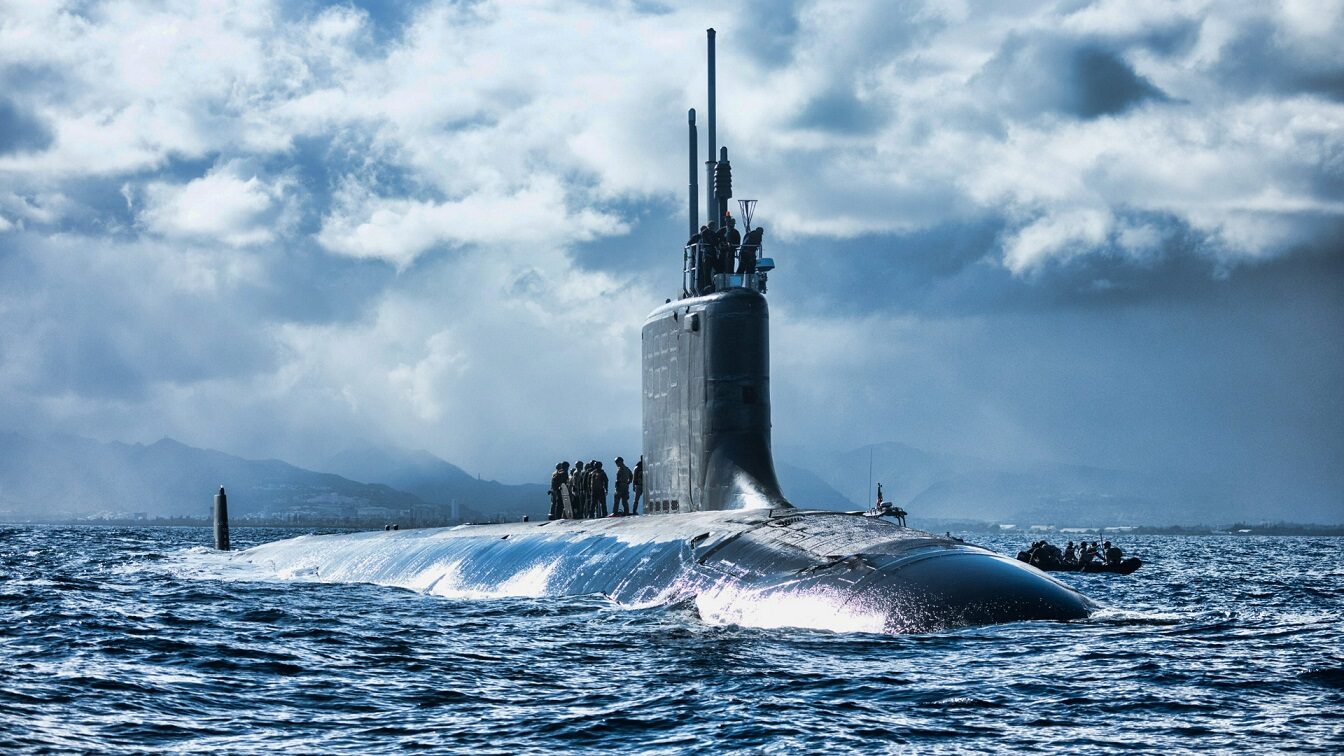The United States Navy has three classes of nuclear-powered fast attack submarines (SSN) in service. Three of those are Seawolf-class boats, which were designed to be exceptionally quiet, fast, well-armed, and equipped with advanced sensors. While a total of 29 were to be built over a 10-year period, due to costs as well as the dissolution of the Soviet Union, the Pentagon scaled back the order – and instead refocused on the smaller but more affordable Virginia-class.
Currently, 22 of a planned 66 have been built, and the new boats were designed to be exceptionally quiet, fast, well-armed, and equipped with advanced sensors. In addition, the Virginia-class has several innovations that significantly enhance its warfighting capabilities, including in littoral or coastal operations.
The third class is the aging Los Angeles-class, the first of which – USS Los Angeles (SSN-668) – entered service in November 1976. She was the first of a then-new class of submarines that became the backbone of the U.S. Navy’s submarine force at a time when the Soviet Union was the top national security threat. Just six months later, on May 27, 1977, President Carter and the First Lady had been hosted onboard the submarine for an at-sea demonstration of her capabilities.
By 1996, the United States Navy took delivery of 62 of its Los Angeles-class nuclear-powered fast attack submarines (SSN). Also known as the 688 – pronounced “Six-Eighty-Eight” after the hull of the lead boat – the submarines were built by Northrop Grumman Ship Systems (formerly Newport News Shipbuilding) and General Dynamics Electric Boat Division. Now more than five decades after SSN-668 was laid down in Newport News, Virginia, there are just 27 in active service – more than any other class in the world.
While they are being replaced by the Virginia-class, the question is whether the Navy is wrong to retire them.
Close-Up on the Los Angeles-Class
Designed as an attack submarine, the Los Angeles-class is equipped for anti-submarine warfare (ASW), intelligence gathering, show-of-force missions, insertion of special forces, strike missions, mining and search and rescue operations. Moreover, all of the submarines of the class built since 1982 are also equipped with a vertical launch missile system with a dozen launch tubes; and are further fitted with a Raytheon CCS Mark 2 combat data system.
The 688s can be equipped with both the land-attack and anti-ship versions of Raytheon’s Tomahawk missiles, while the land-attack version has a range of 2,500 km.
Nine of the boats were deployed during the Gulf War in 1991, during which time Tomahawk missiles were launched from two of the boats at Iraqi targets. Twelve Los Angeles-class submarines were subsequently deployed in support of Operation Iraqi Freedom in March/April 2003, and all of those subs launched Tomahawk TLAM missiles at targets inside of Iraq.
The Los Angeles-class can also carry Boeing’s Harpoon anti-ship missile, which utilized active radar homing to deliver the 225kg warhead. The high subsonic missile has a range of 130 km. The boats can also lay Mobile Mark 67 and Captor Mark 60 mines.
Los Angeles-Class: Keep Or Retire?
Due to the length of the program, a total of 62 Los Angeles-class boats were built between 1972 and 1996 – with the final 23 being of the improved 688i variant. What is notable is that of the 30 retired boats, few actually served the entire 40 years. In fact, a dozen were actually laid up halfway through their projected lifecycle.
USS Baltimore (SSN-704) served less than 16 years, while another five were laid up due to their midlife reactor refueling being canceled. The remaining boats are currently on track to be retired by the mid-2030s.
However, due to pressure to build two Virginia-class attack submarines each year, the Navy is now determined to keep the remaining Los Angeles-class subs in service as long as possible. The service risks falling below the required 48 attack submarines mandated by lawmakers again, as it had in the past two decades. Navy officials have sought to grow the size of the submarine force to its new requirements of 66 to 72 SSNs in the coming years.
“We are currently forecast to sustain a force of 50 SSNs throughout this decade, and that’s almost a 20% improvement over previous assessments,” Rear Adm. Doug Perry, the director of undersea warfare on the chief of naval operations’ staff (OPNAV N97), told reporters last November at the Naval Submarine League annual conference.
Meeting that goal will require keeping the current Los Angeles-class boats a little while longer and that only serves to highlight that the past early retirements were certainly a big mistake.
Los Angeles-Class: Heading Down Under?
While the current Los Angeles-class fleet could be doing its underwater thing for a few more years, there have also been calls to send some of the retired boats to Australia. Last November, former Australian Prime Minister Tony Abbott also suggested that those boats reaching their end-of-life cycle could be utilized by the Royal Australian Navy as training subs.

Los Angeles Class Attack Submarine. Image Credit: Creative Commons.
“Might it be possible for Australia to acquire a retiring [Los Angeles] class boat or two and to put it under an Australian flag and to run it, if you like, as an operational training boat?” Abbott added that he’d make a similar proposal for British nuclear-powered submarines “were I in London.”
As TheDrive reported last year, it isn’t entirely a crazy idea, as the U.S. Navy had converted the former USS San Francisco from an SSN to moored training ship MTS-711. However, the Navy needs every submarine it has, at least if it is serious about reaching those 66 to 72 SSN goals in the coming years.
Expert Biography: A Senior Editor for 1945, Peter Suciu is a Michigan-based writer who has contributed to more than four dozen magazines, newspapers, and websites with over 3,000 published pieces over a twenty-year career in journalism. He regularly writes about military hardware, firearms history, cybersecurity, and international affairs. Peter is also a Contributing Writer for Forbes. You can follow him on Twitter: @PeterSuciu.

